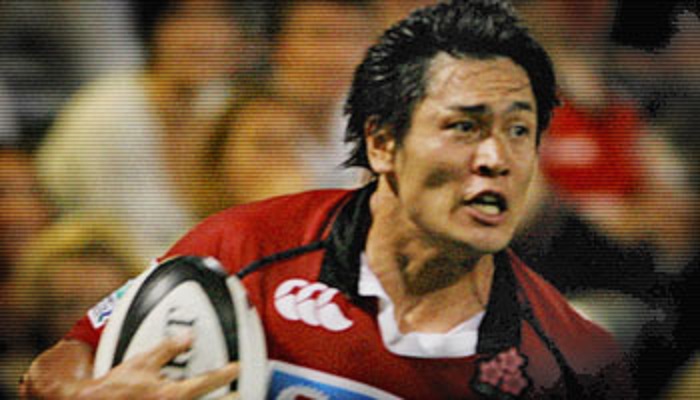Is It Time For An Asian Quota In The All Blacks?

By the time of the 2019 Rugby World Cup, over 1,000 men had represented the All Blacks throughout history. Although the All Blacks are famous for being a successful multicultural operation, not a single one of those thousand plus All Blacks has been Asian. This essay asks whether it’s time for an Asian quota in the All Blacks.
At the time of the 2018 Census, some 15.3% of the New Zealand population were Asians, around 750,000 people. About a quarter million of those are Chinese, another quarter million Indian, and the rest a mix of Japanese, Korean, Thai, Vietnamese, Filipino and a few others. It’s similar to the total number of Maoris and greater than the total number of Pacific Islanders.
Most of those Asians are relative newcomers to New Zealand, and therefore a historic lack of Asian representation is not hard to explain. However, 15% of the current population is a large number of people. On the face of it, it seems extremely improbable that none of these people would have gone on to be an All Black today. Indeed, there are very few Asians among professional rugby players full stop.
The conventional explanation for this disparity is a supposed inherent genetic disadvantage possessed by Asians.
Because rugby is an extremely physical game, the more effective rugby players tend to also be the more muscular ones. For the forwards, muscle power gives the wrestling strength to win possession of the ball; for the backs, muscle power gives the explosiveness to break tackles and to hit gaps. According to the common explanation, Asians lack this muscle power because they don’t have the right genes.
The idea that Polynesians and white people are genetically larger than Asians is part of a school of thought called scientific racism. This school of thought is the rhetoric of dressing up racism in scientific-sounding statements to give it legitimacy. People who adhere to this school of thought like to draw jargon from evolutionary psychology and genetics to create the appearance of support for their case.
Scientific racists will say that, when a people becomes civilised, the set of selection pressures in favour of big muscles are no longer as strong among that people. A capacity for violence gives way to a capacity to co-operate. Hence, the longer a people has been civilised, the smaller they will become. This is the reason why Indians have the least lean muscle mass in the world – they have been civilised the longest.
Scientific racists go on to say that, because Northern Europeans and Polynesians were the last to become civilised, that they have the most lean muscle mass, this being the inevitable consequence of selective pressures that rewarded the most violent and aggressive males with mates and social status. This lean muscle mass makes them better rugby players, and therefore the low level of Asian representation can be explained by Asian inferiority.
In reality, this is merely a “just so” story used to justify racist oppression of Asians.
The truth is that Asians have been discouraged from playing rugby because of the racism they have encountered from Polynesians and white people. Unfortunately, Asians have been stereotyped as small, weedy nerds who are only good at maths and computer science. This has led to an extreme amount of racist bullying from Polynesians and white people, which has discouraged Asians from pursuing higher honours in the game.
Further proof for this contention comes from the observation that all of the Japanese national rugby side’s players are much better at rugby than the average Polynesian or white man. It follows from this that excellence at rugby is primarily a question of dedication to training and not genetics. This proves that the over-representation of Polynesians and whites in the All Blacks cannot be because of inherent racial superiority.
If there is no inherent racial superiority, then anti-Asian racism is the only possible explanation for the lack of Asian representation in the All Blacks. This means that the existing New Zealand rugby structure is obliged to do something about their racism and the historical advantage it has given Polynesian and white players.
One way of rectifying this would be to use the South African solution of racial quotas.
There are 15 players in a starting rugby union team, and 23 players in a match-day team (which includes the bench). This means that fair and equal representation for Asians in the All Blacks (based on their proportion of the New Zealand population) would be something like two starting players and one on the bench.
This doesn’t mean that there should be a quota of three places for Asian players in the All Blacks straight away. A better way to do transformation, following the South African example, would be to have one quota place for Asians in the All Blacks but three quota places for Asians in all Super Rugby teams (at least to start with).
Until New Zealand Rugby can rectify their horrific failure to include Asians in the top levels of professional rugby culture, they will continue to be a racist organisation. They show no willingness to change their attitudes on their own, however. Therefore, a quota for Asian players in the All Blacks is necessary before the All Blacks can be considered, for the first time, a fully representative team.
*
Note: this article is a pisstake. If you got trolled, the joke’s on you!
*
If you enjoyed reading this essay, you can get a compilation of the Best VJMP Essays and Articles of 2018 from Amazon for Kindle or Amazon for CreateSpace (for international readers), or TradeMe (for Kiwis). A compilation of the Best VJMP Essays and Articles of 2017 is also available.
*
If you would like to support our work in other ways, please consider subscribing to our SubscribeStar fund.





